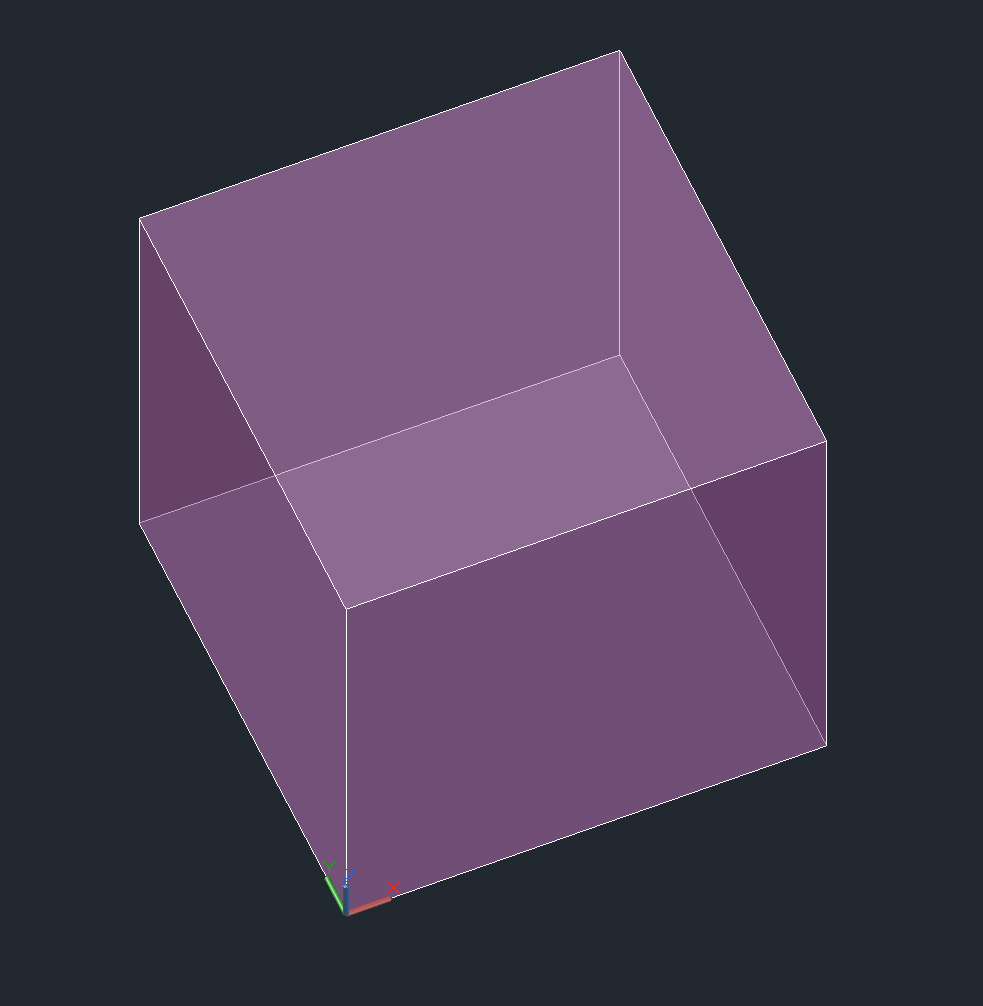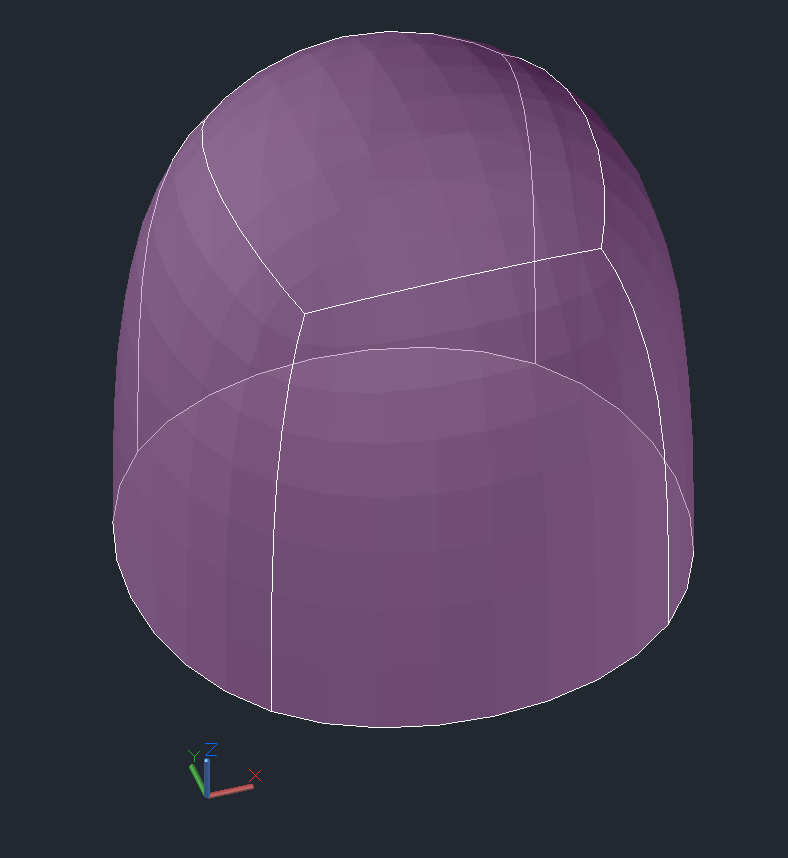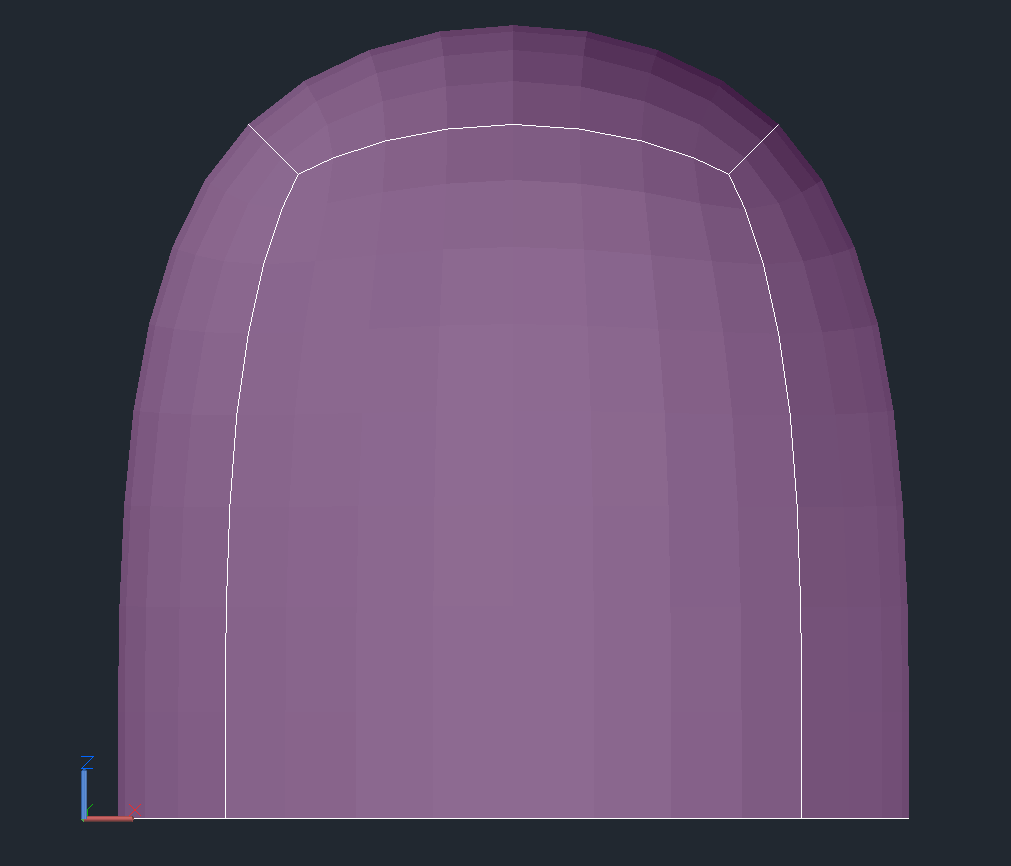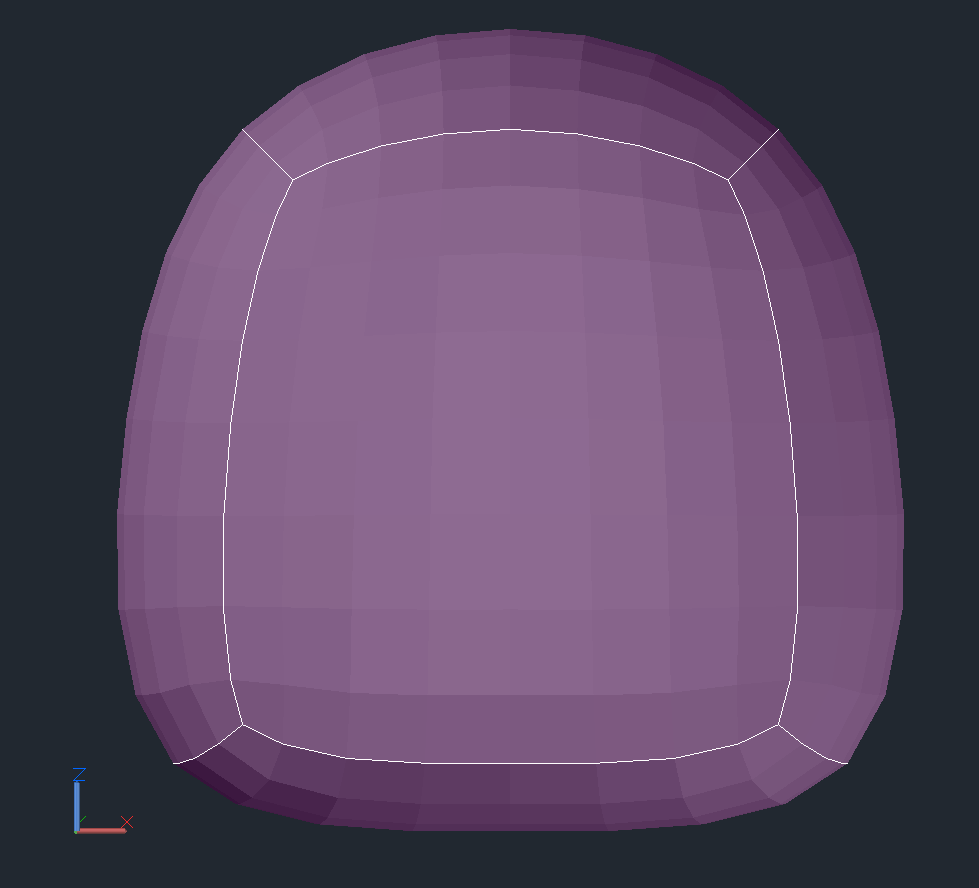MESH Internals
The MESH entity is the compact version of the PolyFaceMesh implemented by the
Polyline entity . The entity stores the vertices, edges
and faces in a single entity and was introduced in DXF version R13/R14.
For more information about the top level stuff go to the
Mesh class.
See also
DXF Reference: MESH
ezdxf.entities.Meshclass
The following DXF code represents this cube with subdivision level of 0:

0
MESH <<< DXF type
5 <<< entity handle
2F
330 <<< block record handle of owner layout
17
100
AcDbEntity
8
0 <<< layer
62
6 <<< color
100
AcDbSubDMesh <<< subclass marker
71
2 <<< version
72
1 <<< blend crease, 1 is "on", 0 is "off"
91
0 <<< subdivision level is 0
92
8 <<< vertex count, 8 cube corners
10 <<< 1. vertex, x-axis
0.0
20 <<< y-axis
0.0
30 <<< z-axis
0.0
10 <<< 2. vertex
1.0
20
0.0
30
0.0
10 <<< 3. vertex
1.0
20
1.0
30
0.0
10 <<< 4. vertex
0.0
20
1.0
30
0.0
10 <<< 5. vertex
0.0
20
0.0
30
1.0
10 <<< 6. vertex
1.0
20
0.0
30
1.0
10 <<< 7. vertex
1.0
20
1.0
30
1.0
10 <<< 8. vertex
0.0
20
1.0
30
1.0
93 <<< size of face list
30 <<< size = count of group code 90 tags = 6 x 5
90 <<< vertex count of face 1
4 <<< MESH supports ngons, count = 3, 4, 5, 6 ...
90
0 <<< face 1, index of 1. vertex
90
3 <<< face 1, index of 2. vertex
90
2 <<< face 1, index of 3. vertex
90
1 <<< face 1, index of 4. vertex
90
4 <<< vertex count of face 2
90
4 <<< face 2, index of 1. vertex
90
5 <<< face 2, index of 2. vertex
90
6 <<< face 2, index of 3. vertex
90
7 <<< face 2, index of 4. vertex
90
4 <<< vertex count of face 3
90
0 <<< face 3, index of 1. vertex
90
1 <<< face 3, index of 2. vertex
90
5 <<< face 3, index of 3. vertex
90
4 <<< face 3, index of 4. vertex
90
4 <<< vertex count of face 4
90
1 <<< face 4, index of 1. vertex
90
2 <<< face 4, index of 2. vertex
90
6 <<< face 4, index of 3. vertex
90
5 <<< face 4, index of 4. vertex
90
4 <<< vertex count of face 5
90
3 <<< face 5, index of 1. vertex
90
7 <<< face 5, index of 2. vertex
90
6 <<< face 5, index of 3. vertex
90
2 <<< face 5, index of 4. vertex
90
4 <<< vertex count of face 6
90
0 <<< face 6, index of 1. vertex
90
4 <<< face 6, index of 2. vertex
90
7 <<< face 6, index of 3. vertex
90
3 <<< face 6, index of 4. vertex
94 <<< edge count, each edge has exact two group code 90 tags
4 <<< the real edge count not the group code 90 tags!
90
0 <<< edge 1, vertex 1
90
1 <<< edge 1, vertex 1
90
1 <<< edge 2, vertex 1
90
2 <<< edge 2, vertex 2
90
2 <<< edge 3, vertex 1
90
3 <<< edge 3, vertex 2
90
3 <<< edge 4, vertex 1
90
0 <<< edge 4, vertex 2
95 <<< edge crease count, has to match edge count!
4
140
3.0 <<< crease value for edge 1
140
3.0 <<< crease value for edge 2
140
3.0 <<< crease value for edge 3
140
3.0 <<< crease value for edge 4
90 <<< property overwrite???
0
The edge and crease data have only a meaning if subdivision of the geometry will be applied! A crease value equal to the subdivision level prevents subdividing for the edge completely, a value between 0.0 and the subdivision level applies subdivision partially.
The cube with subdivision level of 3 and crease values of 3.0:

Front view for better details:

The cube with subdivision levels of 3 and crease values of 2.0:

The cube with subdivision level of 3 and crease values of 1.0:

The property overriding protocol is not documented in the DXF reference and currently I have no access to a CAD application which can created property overriding.